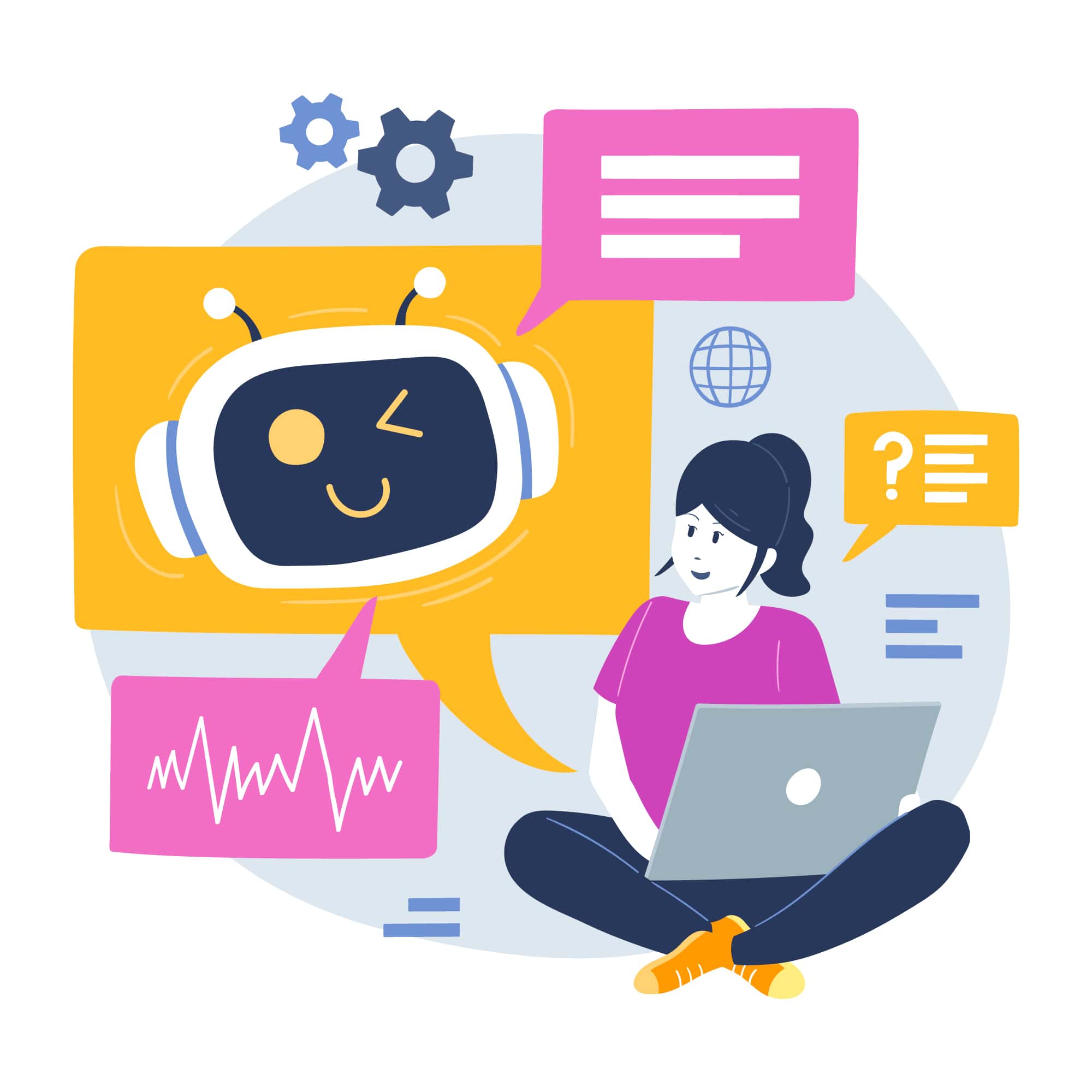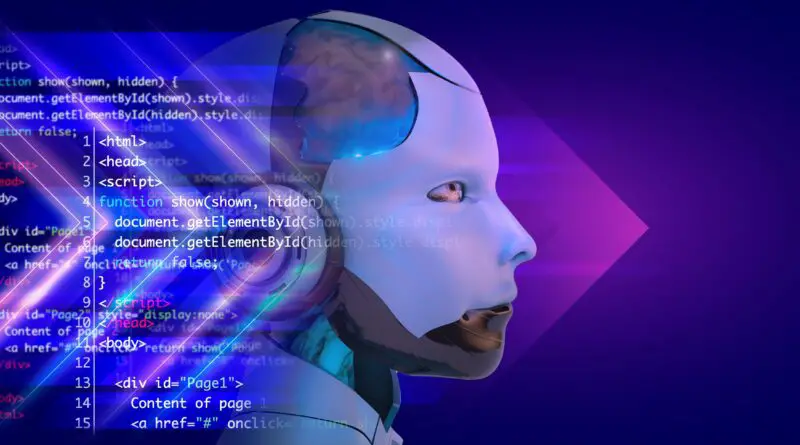Role of Python in artificial intelligence – pythonsden
Introduction
Artificial intelligence (AI) has become a driving factor behind innovation and technological developments in a variety of industries in recent years. AI is changing the way we engage with technology, from self-driving cars to personalised recommendation systems. Python, a versatile and strong programming language, is at the centre of this AI revolution. Python has evolved as the language of choice for AI development, with a vast range of libraries, simplicity, and flexibility that make it ideal for AI applications. In this blog post, we will explore the role of Python in artificial intelligence, delve into the reasons behind its popularity in this domain and also guide understanding AI.
Role of Python in artificial intelligence
- Simplicity and Ease of Use:
Python’s straightforward and elegant syntax makes it an excellent choice for AI development. The language prioritises readability while reducing code complexity, allowing developers to express complicated algorithms and concepts in a succinct and accessible manner. Python’s clear and simple syntax makes it a good language for both novices and specialists, allowing users to swiftly prototype, experiment, and iterate on AI models. Python’s simplicity also translates into better productivity, since developers can concentrate on problem-solving rather than becoming bogged down in complex syntax.
- Vast Ecosystem of Libraries:
Python has a large ecosystem of tools and frameworks created expressly for AI development. TensorFlow, an open-source toolkit that simplifies the building of deep learning models and neural networks, is one of the most popular libraries. Keras, TensorFlow’s high-level API built on top of it, enables developers to efficiently construct, train, and deploy AI models. PyTorch is another well-known toolkit that includes dynamic neural network capabilities, making it ideal for research-oriented AI projects.
Python also includes a number of powerful libraries, such as NumPy, SciPy, and Pandas, that help with data processing, scientific computing, and statistical analysis. These libraries, along with many others, have become indispensable tools for AI developers, allowing them to harness pre-built functionality and focus on addressing specific AI challenges rather than reinventing the wheel.
- Community Support and Resources:
Python’s success in the artificial intelligence sector has resulted in a large and active community of developers, researchers, and fans. This active community promotes continual progress, improvement, and knowledge and resource exchange. There are various courses, documentation, and online forums where developers can seek assistance, exchange ideas, and collaborate on AI projects. Python is a fantastic choice for both novices and experienced developers entering the AI sector due to the availability of comprehensive learning resources and active community assistance.

- Integration and Compatibility:
Python is a popular choice for AI development due to its compatibility and smooth integration with various programming languages and technologies. It enables developers to link AI models with web apps, databases, and APIs, allowing intelligent systems to be deployed across several platforms. Python’s flexibility and interoperability make it an excellent language for developing AI-driven solutions that connect with existing software ecosystems.
- Scalability and Performance:
While Python is known for its simplicity and ease of use, when combined with optimised libraries and frameworks, it also provides scalability and performance. TensorFlow and PyTorch libraries are designed to take advantage of GPU computing capability, enabling for rapid deep learning model training and inference. Python also supports distributed computing frameworks such as Apache Spark, which allow for the efficient processing of massive amounts of data and challenging AI tasks.
Why Python
Many AI enthusiasts and professionals now prefer Python as their programming language of choice. Its ease of use, readability, large library, and active community make it an attractive language for developing AI applications. TensorFlow, Keras, and PyTorch are just a few of the libraries available in Python that offer strong tools and frameworks for constructing and deploying AI models. Python’s accessibility and versatility make it a fantastic starting place for your AI adventure, whether you’re a newbie or an experienced coder.
Understanding AI
Before getting into the complexities of AI, it’s critical to understand its fundamental notions. Artificial intelligence is the creation of intelligent computers that can observe their surroundings, reason, learn, and make decisions in order to attain certain goals. Machine learning, deep learning, natural language processing (NLP), computer vision, and robotics are all subfields of AI. Each discipline focuses on a distinct component of AI, yet they are all interconnected and frequently collaborate to produce intelligent systems.
Machine Learning:
Machine Learning (ML) is a key component of AI that enables machines to learn from data without the need for explicit programming. ML algorithms discover patterns and relationships in data to generate predictions or judgements rather than offering step-by-step instructions. Within ML, common paradigms include supervised learning, unsupervised learning, and reinforcement learning. Python packages, such as scikit-learn, provide a diverse set of machine learning techniques that may be simply developed and used to a variety of applications.
Deep Learning:
Deep Learning (DL) is a subset of ML that processes and analyses complex data by simulating the neural networks of the human brain. DL techniques, which are frequently based on artificial neural networks, excel at dealing with unstructured data like photos, audio, and text. TensorFlow and PyTorch libraries, for example, provide significant support for creating and training deep neural networks, enabling applications like as image recognition, natural language interpretation, and speech synthesis.
Natural Language Processing:
Natural Language Processing (NLP) is the study of how computers interact with human language. NLP approaches enable machines to comprehend, analyze, and synthesize human language, allowing for applications such as chatbots, sentiment analysis, and language translation. Python modules such as NLTK (Natural Language Toolkit) and spaCy provide a variety of tools and models for efficiently processing text data.
Computer Vision:
The development of algorithms and strategies to enable machines to analyse and grasp visual information from photos or videos is known as computer vision (CV). CV is used in a variety of fields, including object recognition, image categorization, and autonomous vehicles. Python, in conjunction with packages such as OpenCV, creates a powerful ecosystem for image and video analysis.
Getting Started:
To begin your AI adventure with Python, you must first create your development environment. Install Python and an Integrated Development Environment (IDE) such as PyCharm, Jupyter Notebook, or Visual Studio Code on your machine. Learn the fundamentals of Python syntax, data structures, and control flow, as they are the foundations of AI programming.
Following that, look into popular Python libraries like TensorFlow, Keras, scikit-learn, and NLTK, to name a few. These libraries include ready-to-use tools, pre-trained models, and extensive documentation to help you get started with your AI projects. There are several online tools, tutorials, and courses available to assist you obtain practical experience and expand your grasp of AI ideas.
Conclusion
Python’s role in artificial intelligence Its simplicity, adaptability, huge libraries, and strong community support make it the favorite language for AI development. Python has revolutionized the field of artificial intelligence, allowing researchers, developers, and corporations to create intelligent systems and applications with remarkable simplicity. Python will remain an important tool in unlocking the full potential of artificial intelligence and defining the future of technology as it evolves.
Python provides the framework and tools needed to bring your AI ideas to life, whether you are a seasoned AI specialist or just starting out in this exciting subject. So embrace Python and go on the thrilling road of constructing intelligent devices that will change the world. Artificial intelligence, powered by Python’s power and agility, opens up a broad range of possibilities for creativity and problem-solving. You are prepared to explore the domains of intelligent machines if you have a basic understanding of AI ideas, machine learning, deep learning, natural language processing, and computer vision. Embrace the Python ecosystem, experiment with libraries, and stay current on AI advances to realize the full potential of this disruptive technology.


